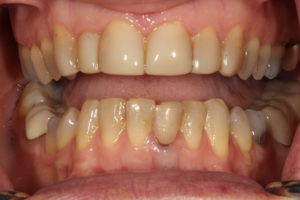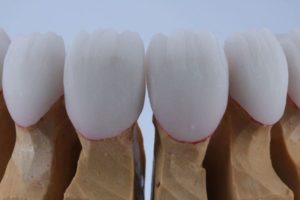“Won’t my insurance cover this?”– Anterior All-Ceramic From Case Selection to Cementation
John Nosti, DMD, FICOI, FAGD, FACE
Clinical Director, Clinical Mastery Series
This patient presented to my office wanting her failing composites replaced with a more definitive restorative material. We all have heard patients ask us this question, “Won’t my insurance cover this?” Here’s how we achieved the maximum reimbursement with this all-ceramic restoration.
I feel that I am skilled in discussing how comprehensive treatment of a full mouth reconstruction or maxillary smile design goes above and beyond what an insurance company will cover in one calendar year. However, this was the first time in my soon to be twenty year career that I encountered a patient with an unlimited maximum to her plan.
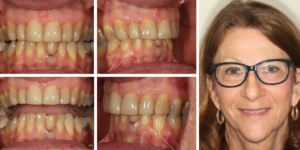
After speaking with the patient and understanding her goals, my next step was to determine how to meet her primary objectives while explaining the risks and benefits of the treatment choices.
She could see her bonding was failing. There was interproximal decay present on all of the existing anterior composites. There were large existing composites and amalgam fillings in her posterior teeth that needed attention as well. After a comprehensive exam, we discussed further findings including excessive wear, collapsed buccal corridor, retro-inclination and occlusal factors that were contributing to the acceleration of her breakdown.
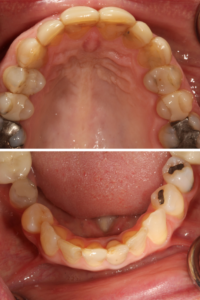 The challenge I was now faced with was optimizing the coding to reflect the treatment that was performed, as well as maximize the reimbursement. We started with diagnostic photographs, diagnostic models, and occlusal analysis of mounted study models. Where appropriate, composite build-ups were completed when ever there was an old restoration removed and new restoration placed to ensure that all decay was removed and proper preparation design was met. Teeth that had large restorations and were previously treated with root canals had prefabricated post and cores placed. All-ceramics were placed from maxillary first molar to maxillary first molar (#3-14) and mandibular lateral incisor to lateral incisor (#23-26). Where appropriate codes for all-ceramic crown or all-ceramic 3/4 crown were utilized.
The challenge I was now faced with was optimizing the coding to reflect the treatment that was performed, as well as maximize the reimbursement. We started with diagnostic photographs, diagnostic models, and occlusal analysis of mounted study models. Where appropriate, composite build-ups were completed when ever there was an old restoration removed and new restoration placed to ensure that all decay was removed and proper preparation design was met. Teeth that had large restorations and were previously treated with root canals had prefabricated post and cores placed. All-ceramics were placed from maxillary first molar to maxillary first molar (#3-14) and mandibular lateral incisor to lateral incisor (#23-26). Where appropriate codes for all-ceramic crown or all-ceramic 3/4 crown were utilized.
 It was not necessary to open her vertical dimension, I removed posterior interferences and established anterior guidance as a first step in stabilizing her parafunctional movements. This extra step was also billed as code- for complex occlusal equilibration. In order to reduce cost and aid in controlling forces, I prescribed monolithic e.Max in the posteriors and canines. For higher aesthetic value this was combined with cut back and layered Empress Esthetics on 7-10 and 23-26 to achieve optimum translucency and vitality in anterior.
It was not necessary to open her vertical dimension, I removed posterior interferences and established anterior guidance as a first step in stabilizing her parafunctional movements. This extra step was also billed as code- for complex occlusal equilibration. In order to reduce cost and aid in controlling forces, I prescribed monolithic e.Max in the posteriors and canines. For higher aesthetic value this was combined with cut back and layered Empress Esthetics on 7-10 and 23-26 to achieve optimum translucency and vitality in anterior.
We lengthened #8 to 11mm from the gingival margin to establish ideal proportions then followed the smile line proportionally to control aesthetics.
This case requires the added protection of a nighttime discluder slider appliance (dual arch bruxism appliance) code-
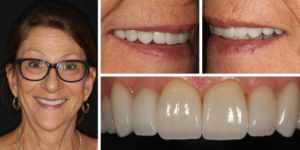
October 1-2, 2021 — Dallas, TX
January 22-29, 2022 — Scottsdale, AZ
March 25-26, 2022 — Atlanta, GA
May 20-21, 2022 — Boston, MA
September 30-Oct 1, 2022 — (TBD)

